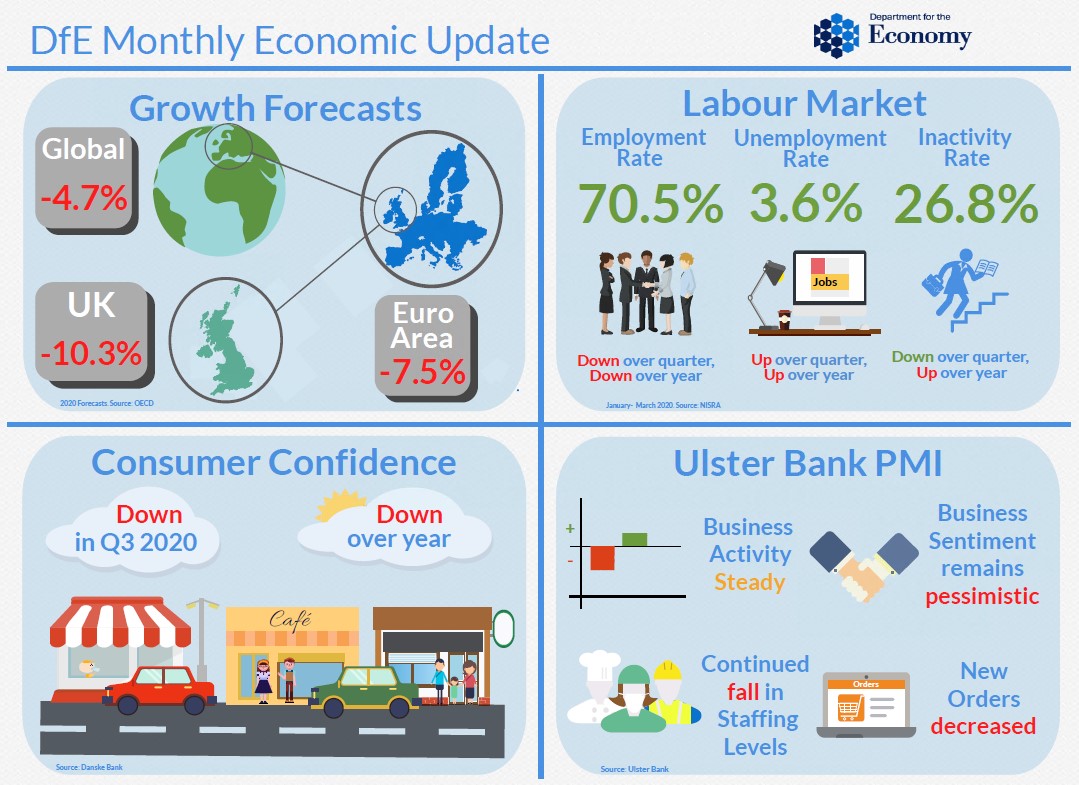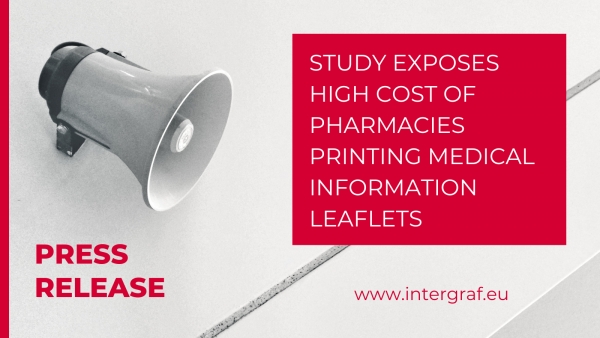13 November 2020

Northern Ireland - DfE Monthly Economic Update
The European Commission's Autumn Economic Forecast expects the global economy to contract by 4.7% in 2020, a considerably worse outcome than during the Global Financial Crisis. Similarly, Euro Area projections have been revised down from the Summer Forecast, contracting by 7.5% this year, before returning to growth of 4.1% in 2021 and 3.0% in 2022. Furthermore, a UK rate of contraction of 10.3% is expected in 2020, followed by growth of 3.3% in 2021 and 2.1% in 2022.
The impact of COVID-19 on the Northern Ireland labour market is further reflected in the latest Labour Force Survey estimates. The unemployment rate for July-September 2020 increased over the quarter and over the year to 3.6%. The NI rate is below the UK (4.8%), RoI (5.4%) and EU (7.4%) rates. At the same time, the inactivity rate fell over the quarter and increased over the year to 26.8%. While the employment rate decreased over the quarter and over the year to 70.5%, it remains relatively high and above rates in 2017. However, the total number of hours worked per week during July-September remains 11% below the total at the beginning of 2020.
The number of people claiming unemployment-related benefits decreased over the month to 60,200 in October, however, this is the sixth consecutive month that the claimant count was above 60,000. A total of 9,600 redundancies were proposed in the 12 months to the end of October 2020 with a further 710 proposed between 1st and 6th November. Furthermore, 1,240 redundancies were confirmed in October, the highest monthly total this year and the second highest monthly total on record.
The latest results from InterTradeIreland's Business Monitor (Q3 2020) illustrates the impact of COVID-19 and how this has had an impact on EU Exit preparations. Prior to the pandemic, 57% of Northern Ireland firms say they were in growth mode; this has now dropped to 22%. Meanwhile, the number of businesses that are in are in decline has jumped from 8% and now stands at firms have made EU Exit preparations. 46%. Consequently, the Monitor reveals that only 18% of firms have made EU Exit preparations.
The latest estimates from the Annual Survey of Hours and Earnings (ASHE) indicate that median gross weekly earnings for full time employees ("weekly earnings") in April 2020 were £529, a decrease of 1.1% from £535 in 2019. This is the first annual decrease in weekly earnings since 2014 and the largest decrease on record. Real weekly earnings decreased by 2.0%. This is the second decrease in real earnings in the last five years and brings real earnings close to levels in 2010. NI now has the second lowest weekly earnings of the 12 UK regions, with London (£761) the highest and the North East (£521) the lowest. Approximately one fifth of all jobs in NI were ‘low paid'. This is the lowest proportion in NI in 20 years but is the highest proportion of the UK regions.
The latest results from the Ulster Bank PMI signalled a stagnation of business activity across the local private sector as new business, backlogs of work, new orders from abroad and staffing levels all fell again. On the price front, rates of inflation of both input costs and output prices quickened. Meanwhile, business pessimism increased in October with Northern Ireland again the only area of the UK to predict a fall in output over the coming year.
The latest Danske Bank Consumer Confidence Index showed that consumer confidence decreased in the third quarter of 2020 as the coronavirus pandemic, EU Exit and the performance of the economy weighed on consumers. The Index fell from 122 in Q2 2020 to 119 in Q3 2020 and remained well below the reading of 131 posted in Q3 2019.
Source: DfE Analytical Services Division
 Intergraf Economic News (Paper Prices) - March 2024
Intergraf Economic News (Paper Prices) - March 2024
18 March 2024
Access the latest edition of the Economic Newsletter for the European Printing Industry for data on paper consumption, and pricing data for pulp, paper and recovered paper. Data for packaging papers and board is also available with this edition.
 STUDY EXPOSES HIGH COST OF PHARMACIES PRINTING MEDICAL INFORMATION LEAFLETS
STUDY EXPOSES HIGH COST OF PHARMACIES PRINTING MEDICAL INFORMATION LEAFLETS
7 March 2024
Intergraf welcomes the release of a study by our partner MLPS (Medical Leaflet = Patient Safety), a subgroup of the European Carton Manufacturers Association (ECMA) shedding light on the potential economic costs associated with the proposed use of Print on Demand (PoD) leaflets in the pharmaceutical legislation revision.

The BPIF is the printing industries champion. By becoming a member you join a diverse and influential community. We help you solve business problems, connect you to new customers and suppliers and make your voice heard in government.
Call 01676 526030









